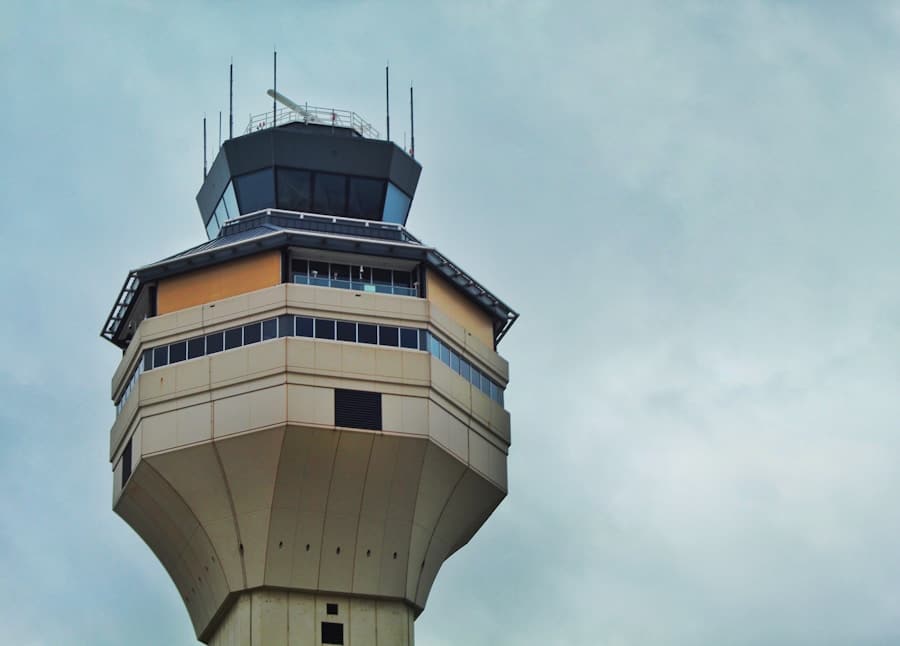The aviation industry has long been a cornerstone of global connectivity, facilitating the movement of people and goods across vast distances. As air traffic continues to grow, the need for efficient and safe air traffic management becomes increasingly critical. Traditional air traffic control systems, while effective, often struggle to keep pace with the rising volume of flights and the complexity of modern airspace.
In this context, artificial intelligence (AI) emerges as a transformative force, offering innovative solutions to enhance the efficiency and safety of air traffic control (ATC) systems. AI-driven ATC systems leverage advanced algorithms, machine learning, and data analytics to optimize flight operations, reduce delays, and improve overall airspace management. The integration of AI into air traffic control represents a paradigm shift in how airspace is managed.
By harnessing vast amounts of data from various sources, including radar systems, weather reports, and flight plans, AI can analyze patterns and make real-time decisions that human controllers may not be able to execute as swiftly. This capability not only enhances situational awareness but also allows for proactive management of air traffic, thereby reducing the likelihood of congestion and potential safety incidents. As we delve deeper into the role of AI in air traffic control, it becomes evident that this technology is not merely an enhancement but a necessary evolution in the face of growing demands on the aviation sector.
Key Takeaways
- AI-driven air traffic control systems are revolutionizing the aerospace industry by optimizing efficiency and safety.
- AI plays a crucial role in improving airspace management, reducing delays, and enhancing overall operational performance.
- The benefits of AI-driven air traffic control systems include increased safety, reduced fuel consumption, and improved on-time performance.
- Challenges and limitations of AI in air traffic control include data privacy concerns, system reliability, and the need for human oversight.
- The implementation and adoption of AI-driven air traffic control systems require collaboration between industry stakeholders and regulatory bodies to ensure seamless integration and compliance with safety standards.
The Role of AI in Optimizing Aerospace Efficiency
AI plays a pivotal role in optimizing aerospace efficiency by streamlining various processes involved in air traffic management. One of the primary applications of AI in this domain is predictive analytics, which utilizes historical data to forecast future air traffic patterns. By analyzing trends in flight schedules, weather conditions, and even passenger behavior, AI systems can predict peak traffic times and adjust flight schedules accordingly.
This proactive approach helps airlines and airports manage resources more effectively, reducing delays and improving on-time performance. Moreover, AI algorithms can facilitate dynamic routing of aircraft in real-time. Traditional ATC systems often rely on fixed flight paths that may not account for changing conditions such as weather disturbances or unexpected congestion.
AI-driven systems can adaptively reroute flights based on real-time data inputs, optimizing flight paths for fuel efficiency and time savings. For instance, if a storm develops along a planned route, an AI system can quickly calculate alternative paths that minimize detours while ensuring safety. This level of adaptability not only enhances operational efficiency but also contributes to environmental sustainability by reducing fuel consumption and emissions.
Benefits of AI-Driven Air Traffic Control Systems

The benefits of implementing AI-driven air traffic control systems are manifold and extend across various dimensions of aviation operations. One significant advantage is the enhancement of safety protocols. AI systems can continuously monitor flight data and identify anomalies that may indicate potential safety risks.
For example, machine learning algorithms can analyze historical incident data to recognize patterns associated with near-misses or accidents. By flagging these patterns in real-time, AI can alert human controllers to take preventive measures before incidents occur. In addition to safety improvements, AI-driven ATC systems can lead to substantial cost savings for airlines and airports.
By optimizing flight routes and reducing delays, airlines can lower operational costs associated with fuel consumption and crew scheduling. Furthermore, airports can benefit from improved resource allocation, as AI systems can predict peak times for passenger flow and adjust staffing levels accordingly. This efficiency translates into a better experience for travelers, who face fewer delays and smoother transitions through airport processes.
Challenges and Limitations of AI in Air Traffic Control
Despite the promising advantages of AI in air traffic control, several challenges and limitations must be addressed before widespread adoption can occur. One major concern is the reliability and accuracy of AI algorithms. While machine learning models can process vast amounts of data, they are only as good as the data they are trained on.
Inaccurate or incomplete data can lead to erroneous predictions or decisions that could compromise safety. Ensuring the integrity of data sources is therefore paramount for the successful implementation of AI-driven ATC systems. Another significant challenge lies in the integration of AI technologies with existing ATC infrastructure.
Many air traffic control systems have been in place for decades and are built on legacy technologies that may not easily accommodate new AI solutions. The transition to AI-driven systems requires substantial investment in both technology and training for personnel who must adapt to new workflows. Additionally, there is a need for regulatory frameworks that govern the use of AI in aviation, ensuring that safety standards are maintained while allowing for innovation.
Implementation and Adoption of AI-Driven Air Traffic Control Systems
The implementation of AI-driven air traffic control systems involves a multi-faceted approach that encompasses technology development, stakeholder engagement, and regulatory compliance. Initially, aviation authorities must collaborate with technology providers to develop robust AI solutions tailored to the specific needs of air traffic management. This collaboration often includes pilot programs that test AI applications in controlled environments before full-scale deployment.
Stakeholder engagement is equally crucial during the implementation phase. Airlines, airport operators, and air traffic controllers must be involved in discussions about how AI will be integrated into existing workflows.
Moreover, fostering a culture of acceptance towards AI technologies within the aviation community is vital for overcoming resistance to change.
Future Trends and Developments in AI for Air Traffic Control

As technology continues to evolve, several trends are emerging that will shape the future of AI in air traffic control. One notable trend is the increasing use of autonomous systems in aviation operations. As drones and unmanned aerial vehicles (UAVs) become more prevalent, integrating these technologies into existing air traffic management frameworks will require advanced AI solutions capable of handling diverse aircraft types and operational scenarios.
Another significant development is the growing emphasis on collaborative decision-making (CDM) among stakeholders in the aviation ecosystem. AI can facilitate real-time information sharing between airlines, airports, and air traffic controllers, enabling more informed decision-making processes. This collaborative approach not only enhances operational efficiency but also fosters a sense of shared responsibility for safety among all parties involved.
Case Studies of Successful AI-Driven Air Traffic Control Systems
Several case studies illustrate the successful implementation of AI-driven air traffic control systems around the world. One prominent example is the Single European Sky ATM Research (SESAR) initiative in Europe, which aims to modernize air traffic management across European airspace. SESAR has integrated advanced AI technologies into its operations to enhance capacity and efficiency while maintaining high safety standards.
The initiative has demonstrated significant improvements in flight punctuality and reduced environmental impact through optimized routing. In the United States, the Federal Aviation Administration (FAA) has also begun exploring AI applications within its NextGen program, which seeks to transform the national airspace system through advanced technologies. Pilot projects have tested machine learning algorithms for predictive maintenance of ATC equipment and real-time decision support tools for controllers.
These initiatives have shown promise in improving operational efficiency and reducing delays across busy airports.
The Impact of AI on the Future of Air Traffic Control
The integration of artificial intelligence into air traffic control systems represents a significant leap forward in managing the complexities of modern aviation. As we have explored throughout this article, AI offers numerous benefits ranging from enhanced safety protocols to improved operational efficiency and cost savings for airlines and airports alike. However, challenges remain that must be addressed through careful planning, stakeholder engagement, and regulatory oversight.
Looking ahead, the future of air traffic control will undoubtedly be shaped by ongoing advancements in AI technology. As autonomous systems become more prevalent and collaborative decision-making practices gain traction, we can expect a more interconnected and efficient aviation ecosystem. The successful case studies from around the world serve as a testament to the potential of AI-driven solutions in transforming air traffic management for the betterment of global aviation safety and efficiency.
A related article discussing the advancements in AI technology can be found in the article “Tesla Refutes Elon Musk’s Timeline on Full Self-Driving”. This article delves into the challenges and progress of self-driving technology, showcasing the ongoing developments in AI-driven systems across various industries. Just as AI is revolutionizing air traffic control systems, it is also shaping the future of autonomous vehicles and transportation.
FAQs
What is an AI-driven air traffic control system?
An AI-driven air traffic control system is a technology that uses artificial intelligence to optimize and manage air traffic in the aerospace industry. It uses advanced algorithms and machine learning to improve efficiency and safety in air traffic control operations.
How does AI-driven air traffic control optimize aerospace efficiency?
AI-driven air traffic control systems optimize aerospace efficiency by improving route planning, reducing delays, and enhancing overall airspace management. These systems can analyze large amounts of data in real-time to make better decisions and improve the flow of air traffic.
What are the benefits of AI-driven air traffic control systems?
The benefits of AI-driven air traffic control systems include increased safety, reduced fuel consumption, minimized delays, improved airspace capacity, and enhanced overall efficiency in air traffic management. These systems also have the potential to adapt to changing conditions and improve decision-making processes.
Are AI-driven air traffic control systems currently in use?
Yes, AI-driven air traffic control systems are currently being developed and implemented in various parts of the world. While they are not yet fully operational on a global scale, there are ongoing efforts to integrate AI technology into air traffic control systems to improve efficiency and safety in the aerospace industry.


